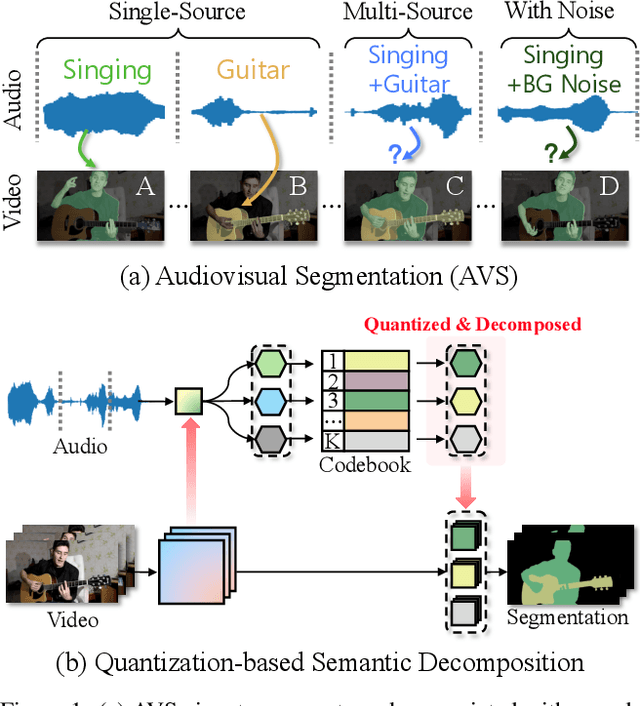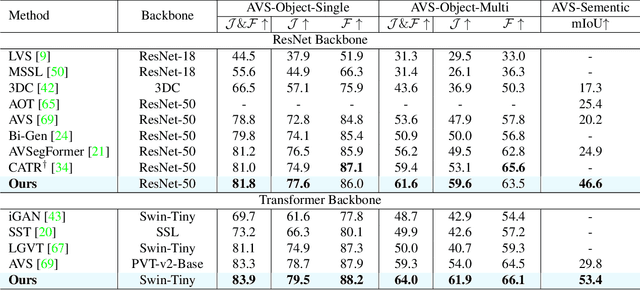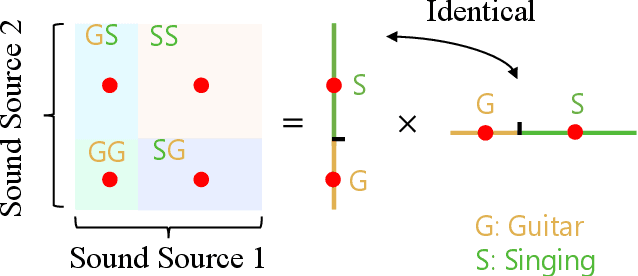Rethinking Audiovisual Segmentation with Semantic Quantization and Decomposition
Paper and Code
Sep 29, 2023



Audiovisual segmentation (AVS) is a challenging task that aims to segment visual objects in videos based on their associated acoustic cues. With multiple sound sources involved, establishing robust correspondences between audio and visual contents poses unique challenges due to its (1) intricate entanglement across sound sources and (2) frequent shift among sound events. Assuming sound events occur independently, the multi-source semantic space (which encompasses all possible semantic categories) can be viewed as the Cartesian product of single-source sub-spaces. This motivates us to decompose the multi-source audio semantics into single-source semantics, allowing for more effective interaction with visual content. Specifically, we propose a semantic decomposition method based on product quantization, where the multi-source semantics can be decomposed and represented by several quantized single-source semantics. Furthermore, we introduce a global-to-local quantization mechanism that distills knowledge from stable global (clip-level) features into local (frame-level) ones to handle the constant shift of audio semantics. Extensive experiments demonstrate that semantically quantized and decomposed audio representation significantly improves AVS performance, e.g., +21.2% mIoU on the most challenging AVS-Semantic benchmark.
 Add to Chrome
Add to Chrome Add to Firefox
Add to Firefox Add to Edge
Add to Edge